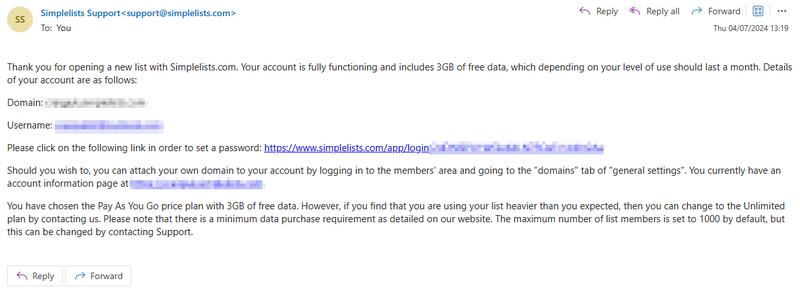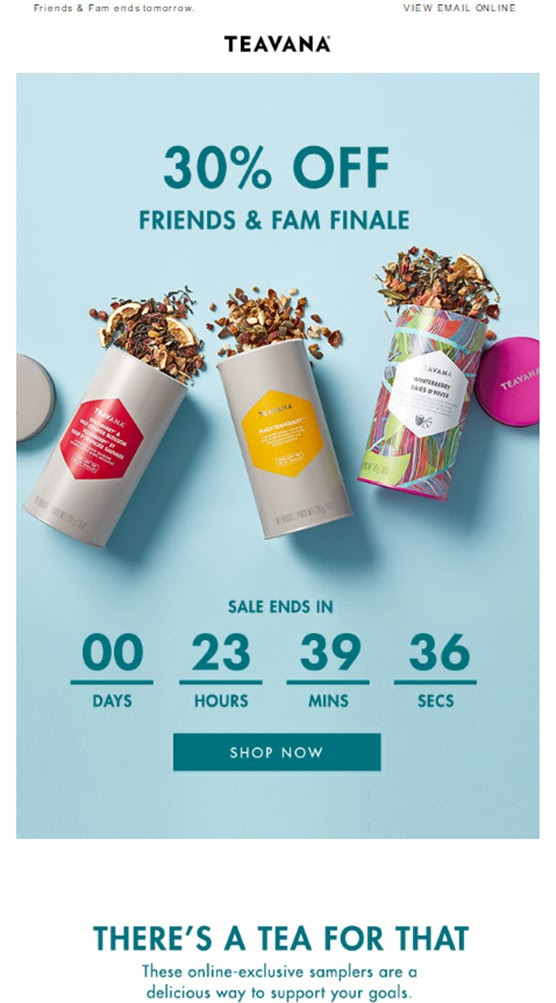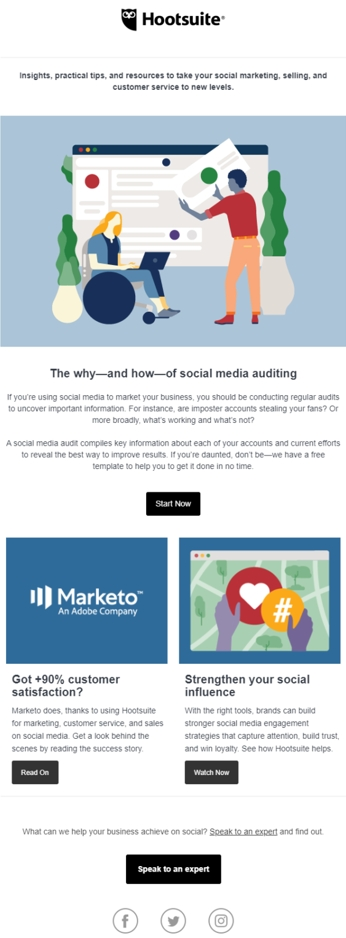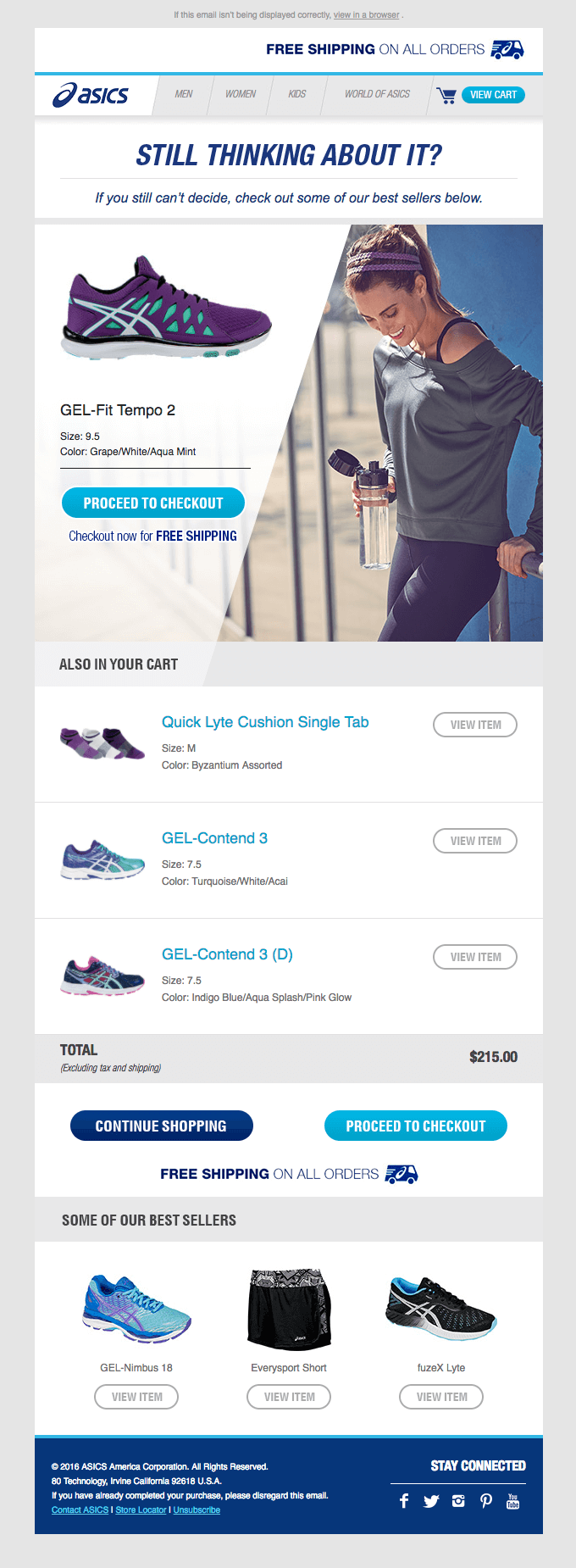
Email remains one of the most important channels for building connections between brands and their audiences. It’s also one of the best marketing channels for driving sales, with 59% of marketers saying it is their highest ROI channel.
However, the businesses that get the best results from group email marketing campaigns tend to do more than just send out an email newsletter each week, or a mass email campaign every time there’s a sale.
The key to achieving email marketing success often involves taking a strategic approach to your emails that have a tailored approach to transactional, promotional, educational, and re-engagement objectives.
But what are the differences between each of these objectives, and how should the content of each of your emails differ to deliver the best results?
In this article, we’re going to explore some of the best practices for these different types of email campaigns and share some real-world examples that demonstrate how to create an email campaign that’s primed for success.
Understanding the different types of email within an email marketing campaign
1. Transactional emails
Transactional emails provide people with information about transactions or interactions they’ve made with your brand.
Think about the emails you receive immediately after you’ve placed an order with a business or the emails you get when you’re struggling to remember your login and hit the “forgotten password” button on a website.
Or, imagine you’ve asked a question on the ‘help’ section of a website, and you get an email reassuring you they have your query and are looking into it.
These are all examples of transactional emails.
It can be all too easy to overlook the importance of transactional emails in your email marketing strategy. But they are actually really important for establishing trust and transparency with customers, managing their expectations, and providing them with a sense of reassurance about doing business with you.
This is why spending time crafting effective transactional emails is a key part of your email marketing strategy.
The most important thing to remember when sending a transactional email is to keep it clear and concise. It should ideally include an easily digestible summary of the user’s transaction or interaction with your business, leaving no room for confusion.
Effective transactional emails also anticipate potential user questions or concerns, and either address them directly or provide a link to supporting resources where users can find out more.
Timing is also important with transactional emails—make sure your email is sent almost immediately after the customer has made their purchase, asked to change their password, or submitted a request for support.
You should also ensure that your email is easily read on all devices. Some businesses opt to keep the design simple, straightforward, and intentionally minimalistic.
2. Promotional emails
Promotional emails are typically used to create awareness, generate interest, and drive sales for your products or services.
These types of emails often contain time-limited special offers or discounts, with the ultimate aim of motivating your subscribers to make a purchase or sign up,
To stand out in crowded inboxes, it’s important that promotional emails have compelling subject lines that capture attention, and bold visuals to keep your audience engaged once they open your message.
Persuasive copywriting is also important to highlight the benefits of your product or service, and how it can solve a specific problem that the subscriber has, or improve their current situation.
It’s also really important to include a bold, distinctive call to action in your promotional emails, that encourages your subscribers to take the action you want them to take.
Another important factor to bear in mind for successful promotional emails is to create a genuine sense of scarcity or urgency.
By making users aware that there is a time limit to take action or a limited number of products available, you can encourage them to act quickly before the opportunity passes.
3. Email newsletters
Email newsletters are an important part of a successful email marketing strategy, as they can help you build deeper relationships with your subscribers and position yourself as an authority in your industry.
While they may not always lead to immediate sales or sign-ups, a consistent email newsletter campaign can help position your business as ‘front of mind’ when customers are ready to purchase.
The content you include in your group email newsletters needs to be approached strategically. Think about the interests and pain points of your target audience and create content that addresses those specific needs and provides genuine value.
There are a variety of approaches you can take to the design of an email newsletter, but a common approach is to provide a ‘teaser’ of articles and resources on your website that encourages users to click through and read more.
Depending on the amount of valuable content you have available, some businesses see success by leading with a ‘hero’ article (the most important) and having supporting content promoted underneath.
To get the best engagement with your email newsletter, it’s important to include relevant images and videos to help break up the text and make the newsletter easier to skim-read and understand.
You’ll also want to pay close attention to your email subject lines, with open questions or engaging statistics often being effective in helping improve the open rate.
4. Re-engagement emails
Sometimes, customers might spend a long time researching products or services on your website, make their way to the checkout or subscribe form, start completing it…and then abandon the process.
Or, you might have customers who have purchased from you consistently for months or years but have recently stopped visiting your site and engaging with you.
This isn’t unusual. It happens to every business.
And it’s where re-engagement emails can help, by connecting with inactive customers and reigniting their interest in your products or services.
When you’re creating a re-engagement email, it’s essential to approach it delicately.
A lot of brands choose to add a touch of humor or a more emotive “we missed you” message to keep things personal and inviting.
If you’re creating a re-engagement email for someone who has abandoned their cart or sign-up form, it can be effective to use personalized elements within your email content – such as their past purchases, the items they browsed, or the products they left in their cart.
And if you want to make your re-engagement email even more enticing, consider including an incentive or promotion to help them re-engage with you – such as a personalized discount or free delivery on their next order.
Timing is also important in how you approach your re-engagement emails. There aren’t any hard and fast rules for this, and it will differ across sectors and industries – but finding the right balance between connecting with your subscribers while you’re still in their minds, without coming across as pushy is the key to success.
Email marketing examples to learn from
Now we’ve established the four types of email that make up a successful group email marketing strategy, it’s time to take a quick look at some real-world examples of brands you might take some inspiration from.
1. Simplelist’s transactional emails
If you sign up for a free trial of Simplelists today, you’ll likely receive the email below (often within about 5 seconds!).
This email marketing example may look quite simple, but it is intentionally simple to make the confirmation easy to read and understand on all devices and email clients.
If you look at the email more closely, you’ll notice it incorporates all the elements of transactional email best practice:
- Confirmation that your trial account is active and fully functioning
- Clarity about the amount of data you have available
- Confirmation of your username, and a secure link to set up a password
- A link to an ‘account information’ page where you can find more details on your trial subscription
- A paragraph at the bottom addressing common questions our subscribers have, inviting them to get in touch with support if they need any help

2. Teavana’s promotional emails
We’re a big fan of this Teavana promotional email, which is also included in Inc42s guide to email marketing.
Looking at the best practice elements of promotional emails, this email marketing example is immediately eye-catching, with compelling visuals to capture the attention of subscribers.
It’s clearly designed to promote sales and includes a generous time-limited promotion for 30% off their range of teas.
And when it comes to generating a sense of scarcity and urgency, the countdown timer does a great job of visually communicating that subscribers only have a short amount of time to take action.
The CTA is basic, but action-oriented and direct, inviting users to “Shop Now”

3. Hootsuite’s email newsletter
If you’re interested in CRMs or marketing, the Hootsuite newsletter is a great resource, and is often used as a good example of what an effective email newsletter should look like.
In the below email marketing example, the topics on social media auditing, customer satisfaction, and social influence are ideal to meet the interests of the target audience – and note the use of questions “Got +90% Customer Satisfaction?” to improve engagement.
The design is crisp and clear, with engaging illustrations to aid readability and help break up the three articles being promoted.
The ‘hero’ article on Social Media auditing is positioned above the fold, with a short summary linking through to more detailed content on the Hootsuite website.
The two supporting articles are positioned below the fold with shorter descriptions.

4. Missguided and Asics re-engagement emails
The Missguided re-engagement email below is often cited as a great example of a re-engagement email for a lapsed customer.
The use of lighthearted humor prevents the email from coming across as pushy and is likely to bring a smile to the reader’s face —always a good thing if you’re looking to prompt them to re-engage.
The email also includes an incentive for free next-day delivery if the user chooses to re-engage, and a creative call to action that aligns with the tone of your email to “treat yourself”

If you’re looking for a good example of a basket abandonment campaign, this email from Asics is worth taking a look at.
It includes personalization by listing the previous products you’ve viewed, as well as suggesting other similar products you might consider.
There’s also a clear reminder about the free delivery for all orders, to help entice the user back.

Delivering effective email campaigns is easy with Simplelists
Email remains one of the most effective forms of marketing for modern businesses.
But to deliver successful group email marketing, you need to take a holistic approach to your email strategy that includes transactional, promotional, educational and re-engagement messages.
The best practice tips and examples in this guide have hopefully helped you gain a better understanding of the approach you might take for each type of email, to give you the best chance of success.
But you’re also going to need the right email platform to help you deliver your various emails to your subscribers.
Simplelists is a versatile email platform primarily used for group email, but many customers use it for their email marketing campaigns.
With full support for HTML email and personalization, and the ability to synchronize with CRMs and other business systems to send emails based on trigger events – Simplelists is an email marketing tool with all the functionality you need to achieve email success.
Ready to do more with your email campaign lists? Simplelists makes email marketing and group email easy. Sign up for a 1 month free trial today.
